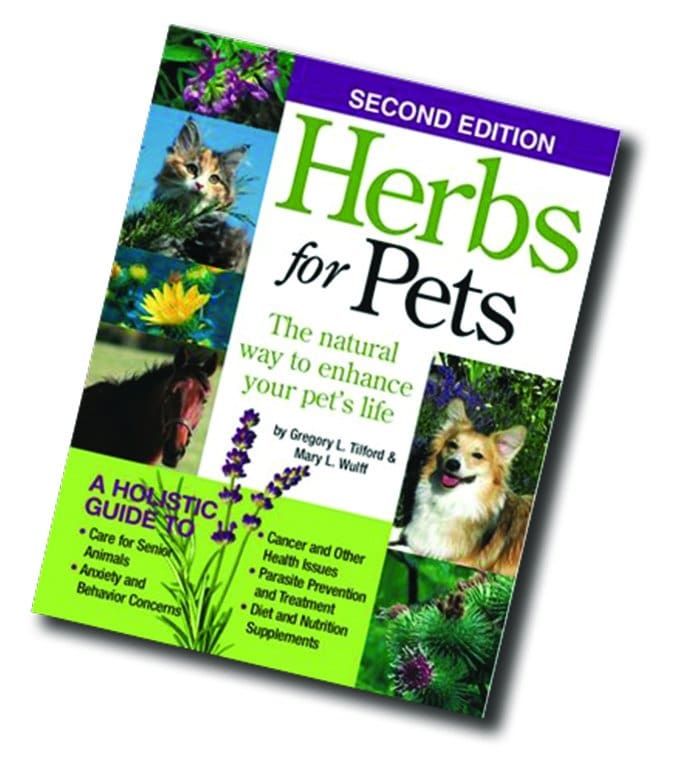[Updated May 23, 2018]
All I could hear was the buzz of a thousand bees as I parted my way through a deep thicket of Heracleum lanatum, a tall, broad-leaved member of the parsley family commonly known as “cow parsnip.” The big, umbrella-like white flower clusters seem to attract every insect imaginable. The plant is also arguably edible, most notably the root. I say, “arguably” edible, because the flavor is downright overbearing – like bitter carrot tops that have been intensified a hundredfold in flavor, then mixed with a pinch of soap. But that’s just my opinion. Much of the wildlife in these mountains relish the flowering tops, and later in the summer, the seeds. On this day I had noticed that several stems had been chewed, five feet above the ground, making me cautious of spooking a moose, which sometimes nap behind the cool cover of the plants. Maybe a moose with a toothache, I think to myself, smiling as I push through the plants. Although not a food choice for me, I do occasionally use Cow Parsnip as medicine. The unripe seeds possess a unique gum-numbing quality when chewed, making them useful for toothaches and other discomforts of the mouth.

But today my quarry is one of my all-time favorites: dandelions. I enter a clearing where the deep, moist soil always yields the best dandelion roots on the mountain, big juicy ones that are easy to dig. Reaching my target patch, I noticed that a few of these plants had also been chewed . . . but judging from the footprints, it looked like the diner in this case was a coyote. I stopped for a moment to take notes and ponder: what may be one animal’s food might serve as medicine for another.
Dandelion, of course, serves as both. Rich with vitamins, protein, iron, and other minerals, dandelion greens are indeed one of nature’s superfoods. The flowers are rich with lecithin, an essential nutrient that plays critical roles in fat metabolism and kidney, liver, and gallbladder function. The roots, the target of my efforts, contain prebiotic inulin (which feeds and maintains healthy digestive flora), strong antioxidant chemistries, and myriad other compounds that combine to make the herb one of my favorite liver tonics.
Dandelion is just one of many useful weeds that may already be flourishing in your own backyard. But before you grab your trowel and start digging, I wish to provide you with a general idea of what to expect from these amazing herbal allies: what they are, what they do, where they stand between food and drugs, and the best ways to use them.
Between Foods & Drugs
Medicinal herbs are simply plants that possess healing properties that extend beyond those that are normally found in most whole, healthy foods. Many herbs are quite nutritious. Parsley, a smaller domesticated cousin of Cow Parsnip, is a perfect example. It is certainly one of nature’s superfoods, containing impressive amounts of vitamins K, C, and A; potassium, iron, and myriad other essential nutrients. It also contains limonene, eugenol, alpha-thujene, apiin, apigenin, crisoeriol, luteolin, and various other chemical constituents that make the plant useful in a broad variety of medicinal applications.
Parsley leaves and roots are valued for their for antibacterial (bacteria-inhibiting) and diuretic (urination-increasing) activities; the seeds, when brewed into a tea and cooled for use as a skin and coat rinse, can heal bites and repel fleas. It is this unique “medicinal-food” property that sets herbs apart from pharmaceutical drugs. Most conventional drugs are designed to treat the symptoms of disease; in contrast, tonic herbs – the kind I like most – work in concert with what the body is naturally designed to do for itself: stay nourished, stay healthy, and resist disease.
Dadalia | Dreamstime.com
A Tonic Against Disease
I consider myself to be a “tonic herbalist,” one who believes that the greatest potential of any herbal remedy rests with its ability to support the body’s innate mechanisms of healing. When used in this context, herbs are not expected to inhibit, bypass, or any way interfere with the body’s natural functions. Instead, they are used to support those natural functions.
For example, non-steroidal anti-inflammatory drugs (NSAIDs) are often used to suppress a fever. But from my perspective, this amounts to working against the body. I see fever as part of the body’s effort to increase peripheral circulation and boost the immune system against bacterial or viral infection. The aim of a tonic herbalist therefore, is not to suppress a fever, but to honor it. Instead of completely suppressing the body’s innate response to infection, herbalists like me use olive leaf extract, Echinacea, Astragalus, or other “immunotonic” herbs to enhance immune system functions and thereby reduce the body’s need to produce fever in the first place.
Unfortunately, not all herb users think this way. Many will reach for herbal tinctures, teas, pills, or powders with hope of replacing a conventional drug with a healthier, more natural alternative. But such use will often lead to disappointment. Most herbs are much weaker in their abilities to suppress symptoms, leading the would-be user to become discouraged and eventually abandon the herbal alternative altogether.
With that said, if you always remember that the primary purpose of using herbs is to support the body’s natural mechanisms of healing, you will have a much better chance of finding the lasting results you are looking for. Then, I recommend that you begin your journey into the world of herbal medicine by employing the plants that grow at your feet, or perhaps those that are already waiting in the kitchen spice cabinet. Here are a few of my other favorites that you might find there…
Chamomile
This is a gentle and effective home remedy that can be safely used in a broad variety of applications. It is easy to access in bulk dried form or in tea bags, and it is also very easy to grow. This is one of the first herbs I reach for in cases of digestive upset that arise from nervousness and hyper-excitability. Dozens of human and animal studies have given us solid information about how chamomile’s chemical compounds contribute to its effectiveness.
For example, when used topically or internally, the apigenenin, chamazulene (and its precursor, matricin), and other volatile oil constituents of chamomile flowers have been shown to help relieve muscle spasms. In the digestive tract, chamomile eases nervous spasms, helps to expel gas, aids in the production of bile to improve digestion, and reduces inflammation throughout. All of these activities combine into an excellent remedy for chronic or acute gastric disorders, including various forms of inflammatory bowel disease.
For these applications the cooled tea can be fed at rate of one to four tablespoons for each 30 pounds of your companion’s body weight, simply by adding it to his drinking water.
Fennel
Fennel seed serves as a gentle anti-gas and antispasmodic agent that can be added directly to your dog’s food. In acute cases – such those which occur when too many goodies are consumed as a result of human weakness at the Thanksgiving dinner table – fennel seed can work wonders. The seeds can be fed directly with food – up to a teaspoon for dogs. However, a cooled tea works even better for this purpose.
Use one teaspoon of the fresh or dried seeds (fresh are better) in eight ounces of boiling water, and steep until cool. The tea can be fed at a rate of two to four tablespoons for each 20 pounds of the animal’s body weight, or it can be added to drinking water as generously as the animal will tolerate.
Heebyj | Dreamstime.com
Rosemary
This is an extremely useful herb. At the top of its medicinal attributes are its “carminative” properties; it relieves flatulence (gas)! and other digestive problems that are secondary to general nervousness, excitability, or irritability.
Rosemary also contains borneol and other volatile oils that are known to exert antispasmodic activity upon the heart and other smooth-muscle tissues. This not only helps moderate cardiac arrhythmia, but also strengthens heart function, making rosemary especially useful in older dogs. The rosmarinic acid contained in the plant is also believed to have pain-killing properties.
For any of these applications, a starting dose of 0.5 ml. (about 1/8 tsp.) of a rosemary tincture can be given orally for each 20 pounds of a dog’s body weight, up to three times daily.
Get some great DIY rosemary ideas from Dogster.com!
Thyme
Most of thyme’s medicinal activity is attributable to its volatile oil constituents, thymol and carvacrol. Thymol is a very good antiseptic for the mouth and throat; useful for fighting gingivitis in dogs. In fact, thyme is used as the active ingredient in many commercial toothpaste and mouthwash formulas.
Combined with thyme’s infection-fighting qualities are antitussive and expectorant properties, making the herb useful for raspy, unproductive coughs that are secondary to fungal or bacterial infection. Thyme also helps ease bronchial spasms that are related to asthma and other respiratory problems.
A glycerin tincture, or an alcohol tincture that has been sweetened with honey, serves well for most internal applications: 1/4 of a teaspoon (1 ml) for each 30 pounds of the dog’s body weight, fed as needed up to twice daily. A cooled tea will work too, provided it has been brewed with near-boiling water to draw out the volatile oil constituents. For the above applications, use one teaspoon for dogs, fed directly into the mouth two to three times daily.
For infections of the mouth or as a preventative against gingivitis, a thyme tincture or a very strong thyme tea can be directly applied to the gums or infected sites with a swab.
In the digestive tract, thyme is a useful carminative and antispasmodic agent; use in cases of dyspepsia, irritable bowel, and colitis. It also helps expel parasites, especially hookworms. In these cases, the dried or fresh herb can be mixed into the dog’s food – one teaspoon per pound of food fed.
Taken in the form of tea or tincture, thymes serves as an antimicrobial in the urinary tract, as well as a mildly astringent tonic that is said to be useful for urinary incontinence.
Used as a skin rinse, a thyme tea or an oil infusion can help eliminate fungal or bacterial infections of the skin.

Greg Tilford is the author of five books on botanical medicine for animals, including the acclaimed Herbs for Pets: The Natural Way to Enhance Your Pet’s Life (i-5 Publications, 2nd ed. 2009). Tilford is a charter member of the Scientific Advisory Committee of the National Animal Supplements Council (NASC), and founded and currently chairs the Animal Products Committee of the American Herbal Products Association, with a mission to promote and protect responsible commerce of herb products intended for use in animals. Tilford also lectures about herbs to veterinarians and owners worldwide.







My son’s dog has seizures. Vets don’t give much help. Could this be parasites in his brain? Is there an herbal treatment for these seizures?
The romans used cilantro for seizures or falling down syndrome as they called it, wormwood was used for parasites. I would recommend a CBD oil, but I don’t know much about herbalism with dogs only humans. Make sure that any herbs you give your dog won’t harm them, wormwood can be poison at high doses to humans(don’t know about dogs) so adjust accordingly for their bodyweight.
Hello, can the herb baume de perou used to help relieve cough in dogs? My dog has been coughing lately.